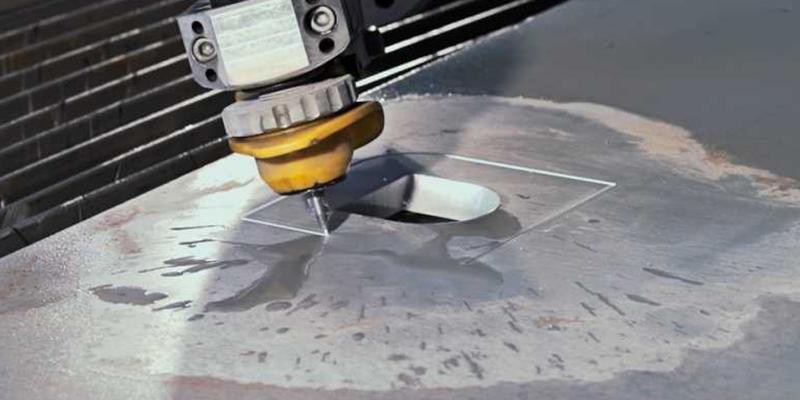- July 8, 2022
The prospect of using water to cut through things first started gaining momentum at the end of the 19th century. Then, water at high pressure was used by miners to dislodge rock material and remove sediments. Before long, in the 1930s, using a narrow beam of water as a cutting technique made its industrial debut, cutting through a variety of soft materials.
Today, industrial water jet cutting has become standard for cutting through diverse materials of varying hardness. Aside from being extremely effective and efficient, the waterjet cutting process is friendly to the environment and versatile in application.
In this article, we will discuss the waterjet cutting process, its benefits, and the various industries that utilize the process. Read on!
What Is Waterjet Cutting?
Waterjet cutting is a cold cutting method that uses highly pressurized water to cut through a wide variety of materials, from foam to metals. The industrial tool this process employs is a waterjet cutter.
Further, the water for cutting can be pure or mixed with abrasives for even greater cutting power. Consequently, the terms pure waterjet and abrasive waterjet are used, respectively.
Although starting very simply industrially, waterjet cutting is one of the most advanced machining processes today. Other than cutting, manufacturers use this process for shaping and reaming materials.
Types of Waterjet Cutting Technology
There are two primary types of industrial water jet cutting. Both of these have their areas of strength, and it is essential to be well-informed about the two types before choosing a type.
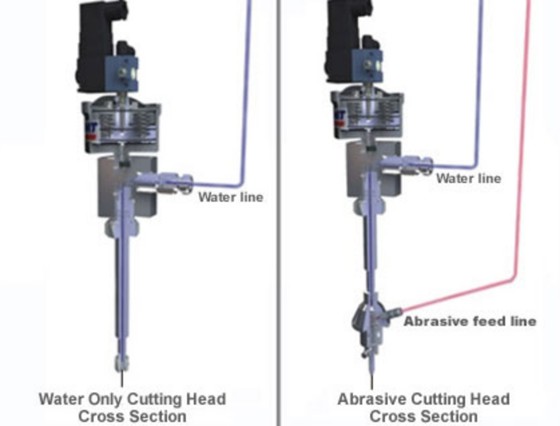
Pure Water Cutting Technology
This type of waterjet cutting uses only the pressure and, consequently, the speed of pure water to cut through things. Pure waterjet cutting is typically restricted to thin materials, like foam, rubber, wood, foil, cardboard, clothing, and food.
The nozzle width of pure waterjet cutting is usually 0.1mm but can be as low as 0.08mm for more complex materials. Unlike CNC cutting and laser cutting, it is a cold cutting method and would not generate heat.
Abrasive Water Cutting Technology
Abrasive waterjets use ultra-high pressure water alongside abrasive particles, like garnet, to cut through materials. Adding abrasive to pure water results in an even more powerful stream, opening far more possibilities with cutting through harder materials. Abrasive waterjet cutting is suitable for ceramic, rocks, metals, and plastics.
Further, the abrasive waterjet cutting process uses nozzles of a higher diameter, up to 0.375mm, than pure waterjets. Certain abrasive waterjet machining tools can generate up to 6000 atmospheres. Moreover, the cutting technology used here is non-thermal and would not generate heat.
Choosing the Right Waterjet Machining Technology
The type of industrial water jet cutting technology you go for should be informed by the type of material you want to cut.
Both of these technologies are non-thermal, so they can both be used for heat-sensitive materials. For harder and thicker materials, abrasive waterjets would do the best job. However, pure waterjet cutting would be better if you need more precision with your cutting, especially with geometrically complex materials.
Additionally, pure waterjet cutting would be favored in the food and medicine industry as they usually have strict requirements on how many foreign substances their products can contain.
Industrially, manufacturers don’t need two machines to achieve both purposes. Many waterjet cutters today have an abrasive mixing chamber you can attach to the nozzle of the waterjet cutter.
The Industrial Water Jet Cutting Process
The principle behind waterjet cutting is leveraging the velocity of ultra-pressurized water to generate a high cutting force. Here’s how it actually works.
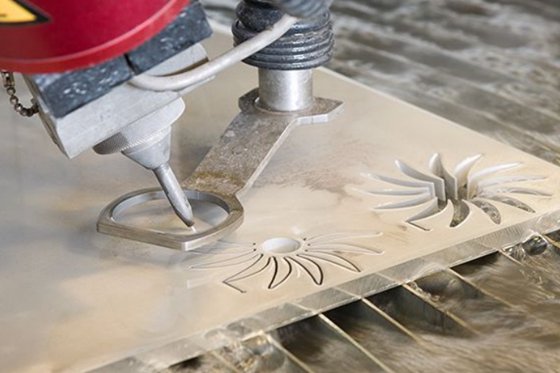
Water is first pressurized to around 4000 atmospheres. After that is done, the water is passed to a ruby or diamond nozzle through a high-pressure tube. It is the nozzle that ejects water from the waterjet cutter. The nozzle used here has to have a small diameter, usually between 0.1 and 0.4mm. Because of the small bore, the cutter concentrates the pressure and ejects a narrow beam of water.
As the water leaves the nozzle, the pressure converts into extremely high velocity, about 1000m/s, which is about three times the speed of sound. This narrow ultra-pressurized beam is what we call the waterjet.
The force of the waterjet is intense and is responsible for the precise and clean cutting we know industrial water jet cutting for. However, the success of the process depends on first getting water highly pressurized before ejection.
Generation of Ultra-High Pressure in a Waterjet Cutter
Before water can be pressurized, it must be finely filtered and desalted. This is usually by reverse osmosis, where water passes through a semi-permeable membrane, losing its impurities as it passes. Because of the high-pressure waterjet machining involves, only professionals should carry out the filtration process.
Following filtration, the operator delivers water to an ultra-high pressure pump, one of the key water jet cutting components. The pump then pressurizes the water to between 3000 and 4000 atmospheres. The pressure the pump generates must be controlled to prevent pressure spikes during the industrial water jet cutting process.
After pressurizing the water, the high-pressure tubes convey it to the nozzle.
Water Jet Cutting Components
There are different components in the cutter, often depending on the manufacturer and type of the waterjet machining tool. However, five major water jet cutting components must be present in any cutter. They are:
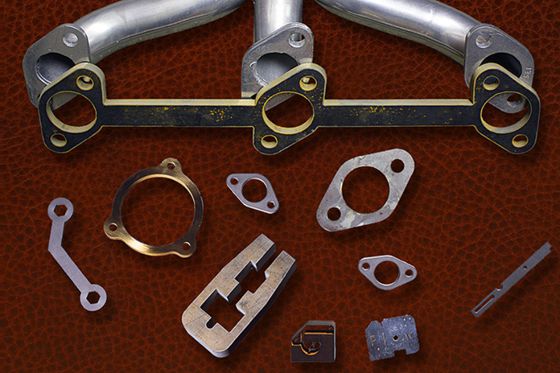
Ultra-high pressure pump
An ultra-high voltage generator powers the pressure pump. It is responsible for generating the pressurized water required for cutting. The pump must be able to control the pressure it generates to allow for smooth cuts of materials.
CNC controller
A CNC guiding machine manages the software of the waterjet cutter. The controller ensures all the sub-processes that go on in the cutter function properly.
Conveying system
This system is often X-Y and allows for repositioning of the nozzle, depending on the cutting path the operator desires.
Nozzle
The nozzle is often made of ruby or diamond and ejects narrow beams of ultra-pressurized water, known as water jets. This component may come with an abrasive mixing chamber that allows correct mixing of abrasives before ejection.
Catcher Tank
After cutting with abrasive-mixed water, this tank dissipates the energy of the waterjet. This is critical in abrasive cutting.
What Materials Waterjet Can Cut?
The waterjet cutter can cut through various materials with varying hardness. Some of them include:
- Foam
- Foil
- Plastic
- Rubber
- Stone
- Granite
- Ceramic
- Glass
- Leather
- Iron
- Cloth
- Titanium
Before the waterjet cutting process actually commences, operators must ensure the technology they want to use is suitable for the material they are cutting. For instance, higher pressures in the abrasive cutter can deform soft materials like foam.
6 Benefits of Waterjet Cutting
Waterjet cutting is one of the most versatile CNC machining processes in industries today. Its widespread use is because of the numerous benefits it offers. We will consider five of them below.
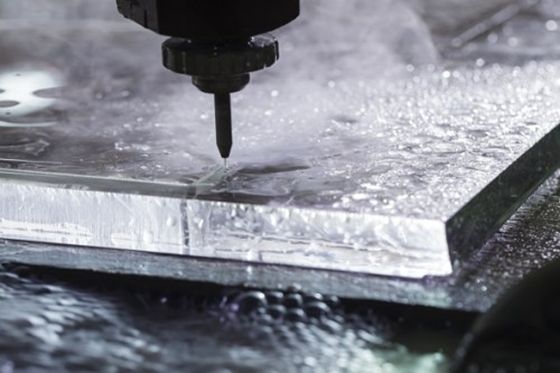
1. Better Edge Quality
The industrial water jet cutting process gives smoothly and uniformly cut edges with no burrs when used. This means, unlike many other finishing, you don’t need secondary processes to complement the quality of the waterjet cutting process. This simplifies the entire cutting process for manufacturers.
In addition, you can cut precisely through different shapes and even 3D materials. This is often a stumbling block for many other cutting processes, as the resultant edge quality is not up to par in complex materials.
2. Improved Operating Efficiency
In terms of efficiency, few come close to waterjet cutting in the industry. For one, because you do not need additional finishing, you get to save valuable time and complete the cutting process fast.
With waterjet technology, you can cut through materials relatively rapidly and do this without having to worry about the state of materials afterward.
3. Suitable for Many Materials
Versatility is one of waterjet technology’s biggest selling points. There are fewer processes that are suitable for a vast diversity of materials with varying hardness. With waterjets, you can cut through materials as thick as 200mm and materials as thin as paper.
What’s more, you don’t have to worry about deformity during cutting as long as you use the right waterjet cutting technology and handle the process expertly.
4. Tool Changes Not Required
When working with a pure waterjet cutter and you need to cut through something very thick, all you need to do is attach a mixing chamber to the nozzle, and you can get abrasive cutting. You don’t need to spend money on an extra cutter.
Furthermore, for more minor changes in thickness where you do not need another technology, you can alter the feed rate of the cutter. This enables you to meet the speed requirement required to cut the material.
5. No Heat Affected Zones
Thermal distortion was one of the cutting industry’s most significant problems before the waterjet cutting process. This occurs because many industrial cutting processes generate heat during their operation. After prolonged use, this can lead to warping, molecular deformity, or inaccurate cutting of the material.
Aside from potentially damaging the material, the heat may also constitute a health hazard to operators through burns.
Industrial water jet cutting, though, is a non-thermal process. It does not generate heat, making it suitable for heat-sensitive materials.
6. Environment Friendly
The waterjet technology involves using highly pressurized water for cutting. There is no need to add chemicals for the cutting process, removing the risk of hazardous waste during and after cutting. There is also no dust generation, making it safe for handlers.
Industrial Applications of Waterjet Cutting
This cold-cutting process is useful in many industries for several different reasons. Below, we will examine the major applications of the process, as well as the industries of use.
Product Manufacturing
Industries concerned with manufacturing different products commonly use waterjet cutting because of its high functionality and quality. These industries often require heavy and precise cutting for big material components. They include the aerospace, transportation, defense, construction, and automotive industry.
Subcontractor
Waterjet cutters are a staple in the workshop of many subcontractors because of their ability to handle specific cutting needs with high efficiency. Examples of industries that use this approach are power, electronics, medical, and engineering.
Material Processing
This usually comes at an earlier stage than the other applications on this list. Here, raw materials processing takes place. Manufacturers value efficiency and effectiveness in this aspect, making waterjet technology an industry standard. Industries that process metals, rocks, glass, plastics, and rubber often rely on this cutting process.
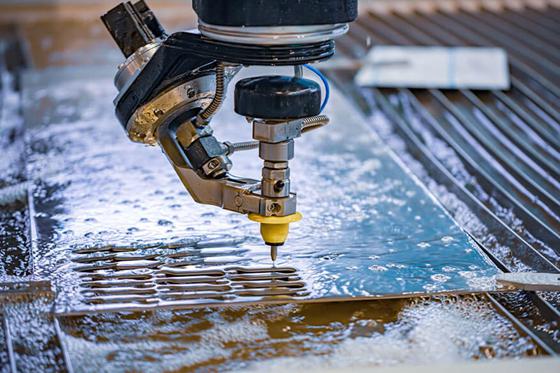
Waterjet Machining - Meet Your Needs at WayKen
Waterjet machining is one of the fastest developing machining processes. A lot of industries have adopted the process because of the high quality of cutting through diverse materials. Its environmental friendliness, and the fact that materials are not deformed by heat during cutting.
Because of the high pressure generated during the process, industrial water jet cutting must be handled carefully by experts at all stages of cutting. At WayKen, you can get experienced experts to handle all of your waterjet machining needs. We are also a one-stop rapid prototyping manufacturer, specializing in CNC Machining, sheet metal fabrication, rapid injection molding, and various types of surface finishes. Reach out to us and get a free quote today.

